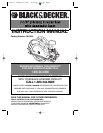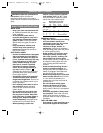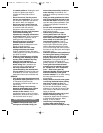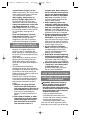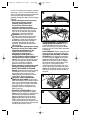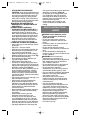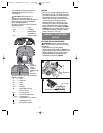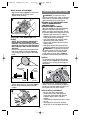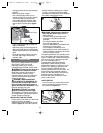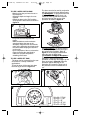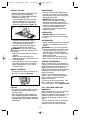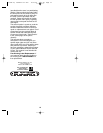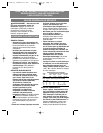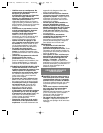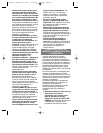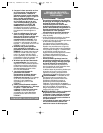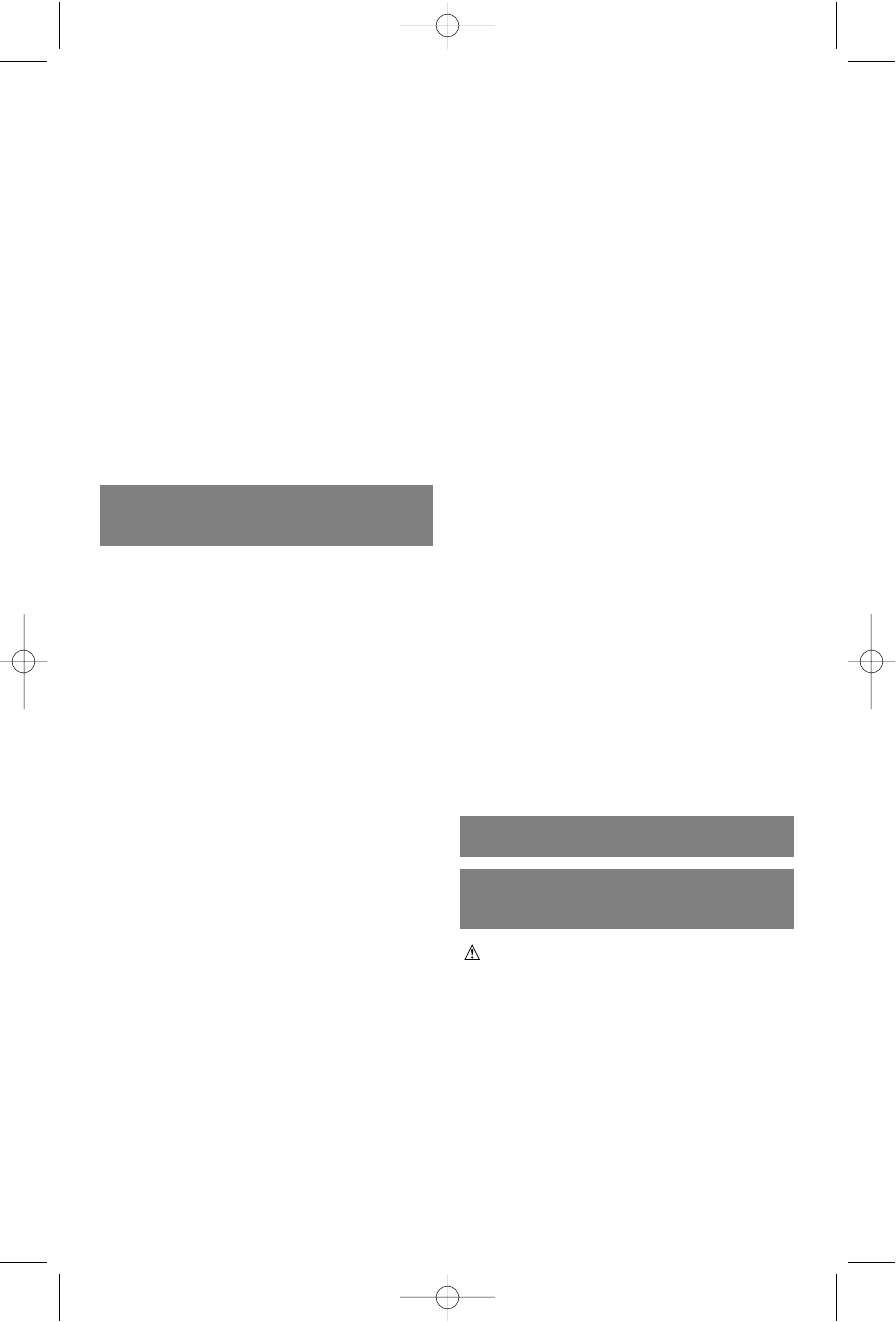
4
contact hidden wiring or its own
cord. Contact with a “live” wire will also
make exposed metal parts of the tool
“live” and shock the operator.
• When ripping, always use a rip
fence or straight edge guide. This
improves the accuracy of cut and
reduces the chance for blade binding.
• Always use blades with correct size
and shape (diamond vs. round)
arbor holes. Blades that do not match
the mounting hardware of the saw will
run eccentrically, causing loss of
control.
• Never use damaged or incorrect
blade washers or bolts. The blade
washers and bolt were specially
designed for your saw, for optimum
performance and safety of operation.
• Kickback is a sudden reaction to a
pinched, bound or misaligned saw
blade, causing an uncontrolled saw to
lift up and out of the workpiece toward
the operator.
• When the blade is pinched or bound
tightly by the kerf closing down, the
blade stalls and the motor reaction
drives the unit rapidly back toward the
operator.
• If the blade becomes twisted or
misaligned in the cut, the teeth at the
back edge of the blade can dig into the
top surface of the wood causing the
blade to climb out of the kerf and jump
back toward operator.
• Kickback is the result of tool misuse
and/or incorrect operating procedures
or conditions and can be avoided by
taking proper precautions as given
below.
a. Maintain a firm grip with both
hands on the saw and position
your body and arm to allow you to
resist KICKBACK forces. Kickback
forces can be controlled by the
operator, if proper precautions are
taken.
b. When blade is binding, or when
interrupting a cut for any reason,
release the trigger and hold the
saw motionless in the material
until the blade comes to a
complete stop. Never attempt to
remove the saw from the work or
pull the saw backward while the
blade is in motion or KICKBACK
may occur. Investigate and take
corrective actions to eliminate the
cause of blade binding.
c. When restarting a saw in the
workpiece, center the saw blade
in the kerf and check that the saw
teeth are not engaged into the
material. If saw blade is binding, it
may walk up or KICKBACK from the
workpiece as the saw is restarted.
d. Support large panels to minimize
the risk of blade pinching and
KICKBACK. Large panels tend to
sag under their own weight. Support
must be placed under the panel on
both sides, near the line of cut and
near the edge of the panel.
e. Do not use dull or damaged
blade. Unsharpened or improperly
set blades produce narrow kerf
causing excessive friction, blade
binding, and KICKBACK.
f. Blade depth and bevel adjusting
locking levers must be tight and
secure before making cut. If blade
adjustment shifts while cutting, it
may cause binding and KICKBACK.
g. Use extra caution when making a
“Pocket Cut” into existing walls
or other blind areas. The
protruding blade may cut objects
that can cause KICKBACK.
SE THESE INSTRUCTIONS
WARNING: Some dust created by
power sanding, sawing, grinding,
drilling, and other construction
activities contains chemicals known
to cause cancer, birth defects or other
reproductive harm. Some examples
of these chemicals are:
• lead from lead-based paints,
• crystalline silica from bricks and
cement and other masonry products,
• arsenic and chromium from
chemically-treated lumber (CCA).
Your risk from these exposures varies,
depending on how often you do this type
CAUSES AND OPERATOR
PREVENTION OF KICKBACK:
SAVE THESE INSTRUCTIONS
ADDITIONAL SAFETY RULES:
CIRCULAR SAWS
631798-01, CS1000L Cir Saw 12/16/05 1:14 PM Page 4



